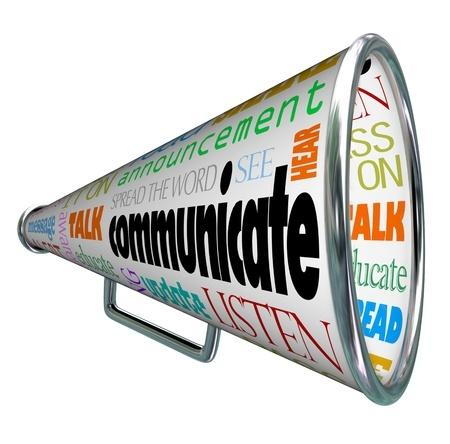How to Communicate With More Intention
How to Communicate With More Intention
 Are you communicating as effectively as you could be? Many leaders I coach are so busy with heavy workloads, back-to-back meetings, and responding to emails, they don’t have the luxury of taking the time to communicate with more intention. However, spending a few minutes upfront when communicating can prevent unwanted misunderstandings, conflict, and rework, thus saving you a lot of time in the long run.
Are you communicating as effectively as you could be? Many leaders I coach are so busy with heavy workloads, back-to-back meetings, and responding to emails, they don’t have the luxury of taking the time to communicate with more intention. However, spending a few minutes upfront when communicating can prevent unwanted misunderstandings, conflict, and rework, thus saving you a lot of time in the long run.
Below are some questions to intentionally consider for increasing the effectiveness of your communication.
- Who is my audience? Who needs to be included? Who else will be impacted by this and needs to know about it?
- What is the message I want to communicate? What, when, where, why, and how? Why should they care? (What’s in it for them?)
- What action do I want them to take?
- What is the best method to communicate my message?
Selecting a communication method that is most appropriate for your message and audience is critical. Keep in mind that only 7% of the message is communicated through the words you use, 38% through tone of voice, and 55% through body language and facial expressions. If you rely solely on email for most of your communication, there is a huge potential for misunderstandings. Below are some tips for selecting the best communication method to use in different situations.
- Face-to-face (in-person or video) is best used for anything complicated that would take more than a few sentences to explain in an email, anything that could be misinterpreted, or anything that could cause an emotional response, such as giving constructive feedback. It’s also best when you want to have a conversation and see body language/facial expressions in response to your message, such as brainstorming ideas, establishing rapport in a new relationship, or building connection and trust with team members.
- Phone can also be used for anything complicated that would take more than a few sentences to explain in an email, or anything that could be misinterpreted. It can also be used when you want to establish a dialogue, but do not need to see body language in response to your message.
- Email is best used for relaying simple information, such as facts, simple instructions, short responses, simple requests, nothing controversial, nothing that would cause an emotional response, or as a follow up to a face-to-face conversation, such as summarizing agreements and next steps.
- Text is best used for very short and simple exchanges of information (no more than one or two sentences) that require only short responses.
By being more intentional when communicating, you set yourself up for better understanding, increased productivity, and better relationships. Clear communication not only makes you more effective as a leader, but it also helps your team members be more productive and engaged because they aren’t wasting time trying to gain clarity or being needlessly frustrated. Clear communication is the mark of great leadership and helps everyone.
“It is estimated that the majority of email communication is usually deformed, meaning that the reception of a message by the receiver is usually different than the intention of its author.” – Communication Skills Training by Ian Tuhovsky
“The most important thing in communication is hearing what isn’t said.” – Peter Drucker
“Effective communication only occurs when the intended message of the speaker is clearly understood by the listener.” – Steve Mueller
Coaching Readiness Assessment
Try our FREE Online Coaching Readiness Assessment to evaluate your readiness for leadership coaching.
LOCATION
Primary Location
3010 Highland Parkway, Suite 200
Downers Grove, IL 60515, US


